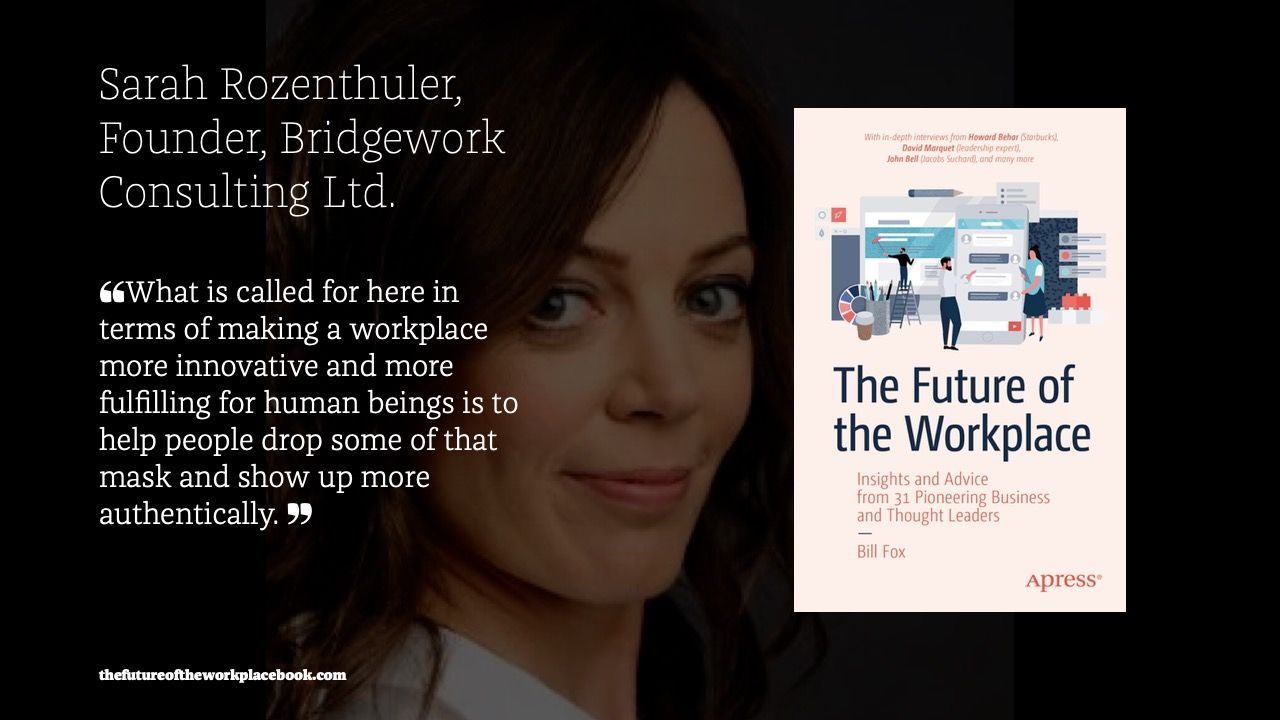How to Create the Right Conditions for Stunning Conversations
By enhancing our ability to talk together, we can create the lives that we desire, for ourselves and for those whose lives we touch. If one of us finds the courage to talk, then another does, then another, this domino effect could even change the world.

Sarah Rozenthuler: Sarah Rozenthuler is a Chartered Psychologist, a leadership coach, a dialogue consultant, and a motivational speaker. She is the author of Powered by Purpose (2020) and Life-Changing Conversations: 7 strategies for talking about what matters most (2012)
At Forward Thinking Workplaces, we are discovering the people, insights, and strategies that lead to Forward Thinking minds, leaders, and workplaces of the future — today. Forward Thinking conversations will define the great workplaces of the 21st century. Check out our upcoming Events page or visit billfox.co to learn more.
How can we create workplaces where every voice matters, everyone thrives and finds meaning, and change and innovation happen naturally?
Sarah: It’s a big question with many dimensions to it. But if I just address the essence of it, one of the key things is to make the workplace psychologically safe and stimulating.
People will only find their voice and share their thinking if they feel safe.
Early on our ideas might be half-baked rather than anything really polished because often we refine our thinking in conversation with other people. In order for people to share those early thoughts, they need to feel safe. The combination of psychological safety and making it stimulating is a really interesting combination, so everybody can thrive.
I think people are increasingly recognizing that we can all wear a corporate mask and that there are parts of ourselves that we think are more socially acceptable or presentable.
What is called for here in terms of making a workplace more innovative and more fulfilling for human beings is to help people drop some of that mask and show up more authentically.
While it’s easy to say, I think that shift is actually quite challenging. Because in showing up more authentically, that also might be sharing parts of ourselves that feel more vulnerable and risky to share.
I like what the people at the Harvard Negotiation Project say about their work on conversations. One of the things they say is that difficult conversations are about difficult emotions. And actually, I think to break through to that more innovative and creative thinking and talking space, there’s often a difficult conversation to be had because there’s a diversity of perspectives. Or there might be a degree of conflict.
So actually, part of the journey is learning to manage difficult emotions in oneself and in other people. Inside of that, how much do I express? What’s appropriate? Dropping the corporate mask sounds simple, but it’s not easy. To break through to that more innovative and creative thinking and talking space, there’s often a difficult conversation to be had because there’s a diversity of perspectives.
What does it take to get an employee’s full attention and best performance?
Sarah: It’s really important that people feel listened to. That, to me, is just fundamental. If people feel sidelined or feel that they’re an expendable resource or easily replaceable, they are not feeling valued as human beings. I know if that’s going on inside me, I wouldn’t be engaged. I wouldn’t be giving my best thinking to a project. Feeling listened to is absolutely critical.
Feeling stretched and stimulated and involved is important too so that there’s genuine curiosity from co-workers and other team members. For example, do people want to know what are your ideas or what has been your experience? Are you being asked to share your wisdom? What is the unique human being you are, what are you seeing? Are people properly engaged in a conversation? It’s back to this combination of both feel supported and safe, but also feeling stretched and challenged as well.
Note: This is a preview of the full interview. The complete interview was selected by Apress for publication and continues in The Future of the Workplace.
